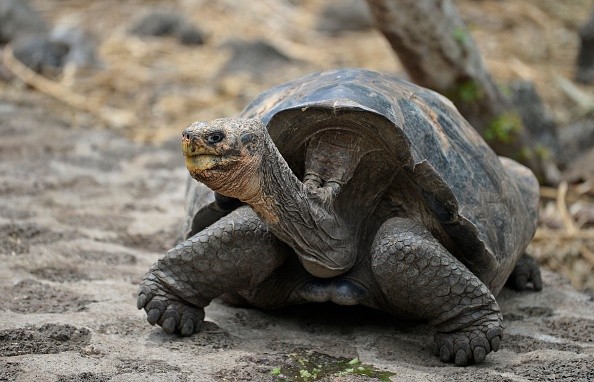Researchers have identified a previously unknown species of giant tortoise on an island in the Galapagos after DNA testing. Tortoises residing on San Cristobal today are genetically distinct from tortoises gathered from a cave in the island's mountains in 1906, according to researchers.

How the New Giant Tortoise Species was Discovered
There are about 8,000 tortoises on the island now that were previously assumed to belong to a distinct lineage because 20th-century explorers never reached the island's lowlands in the northeast, according to Phys.org.
San Cristobal Island's giant tortoise species, Chelonoidis chathamensis, now matches a different species genetically, according to information released by the Ministry of Environment on Thursday.
According to a newsletter from the Galapagos Conservancy, a species of Chelonoidiscus chathamensis is almost certainly extinct and that the island of Galapagos had once been home to two distinct species of tortoise, one that lived high up and another that lived down low.
The Galapagos Islands, located in the Pacific roughly 600 miles off the coast of Ecuador, are a protected wildlife region and home to a wide variety of rare plant and animal species. British geologist and naturalist Charles Darwin made the archipelago renowned with his findings on evolution there.
Also Read : Supposedly Extinct Galapagos Giant Tortoise Species Confirmed to Have Resurfaced in the Island
Should the Tortoises Inhabiting San Cristobal be Named?
According to the Galapagos National Park, the islands once had 15 different species of giant tortoise. Three of those species have since gone extinct.
The species Chelonoidis phantastica was thought to be extinct until a specimen of it was discovered on Fernandina Island in 2019, as per The Straits Times.
Researchers from Newcastle University in Britain, Yale in the United States, the American NGO Galapagos Conservancy, and other institutions conducted the study, which was published in the journal Heredity.
San Cristobal's tortoises, which are 557 kilometers long, may be given a new name as scientists continue to extract DNA from their bones and shells.
Efforts to Conserve Giant Tortoises
The Galapagos National Park (GNP) and Charles Darwin Foundation (CDF) were established to protect both the islands and the creatures that call them home. Efforts to conserve giant tortoises have resulted in steady or expanding turtle populations in the present day.
In spite of this, the Galapagos giant tortoises are resourceful and have largely been able to adapt to their habitat over the course of history.
Currently, the greatest threat to tortoise populations is human activities, or anthropogenic. In response to humans, tortoise populations have plummeted since the arrival of buccaneers and whalers, who utilized the Islands as a base.
Since humans need to create conservation plans for the giant tortoise, researchers need to know as much as possible about their lives. Movebank and the Galapagos Tortoise Movement Ecology Project are two examples of this type of strategy.
Related Article : Illegal Wildlife Trade: 15 Giant Tortoises Found Brutally Murdered in Galapagos Islands
For more news, updates about giant tortoises and similar topics don't forget to follow Nature World News!
© 2025 NatureWorldNews.com All rights reserved. Do not reproduce without permission.





